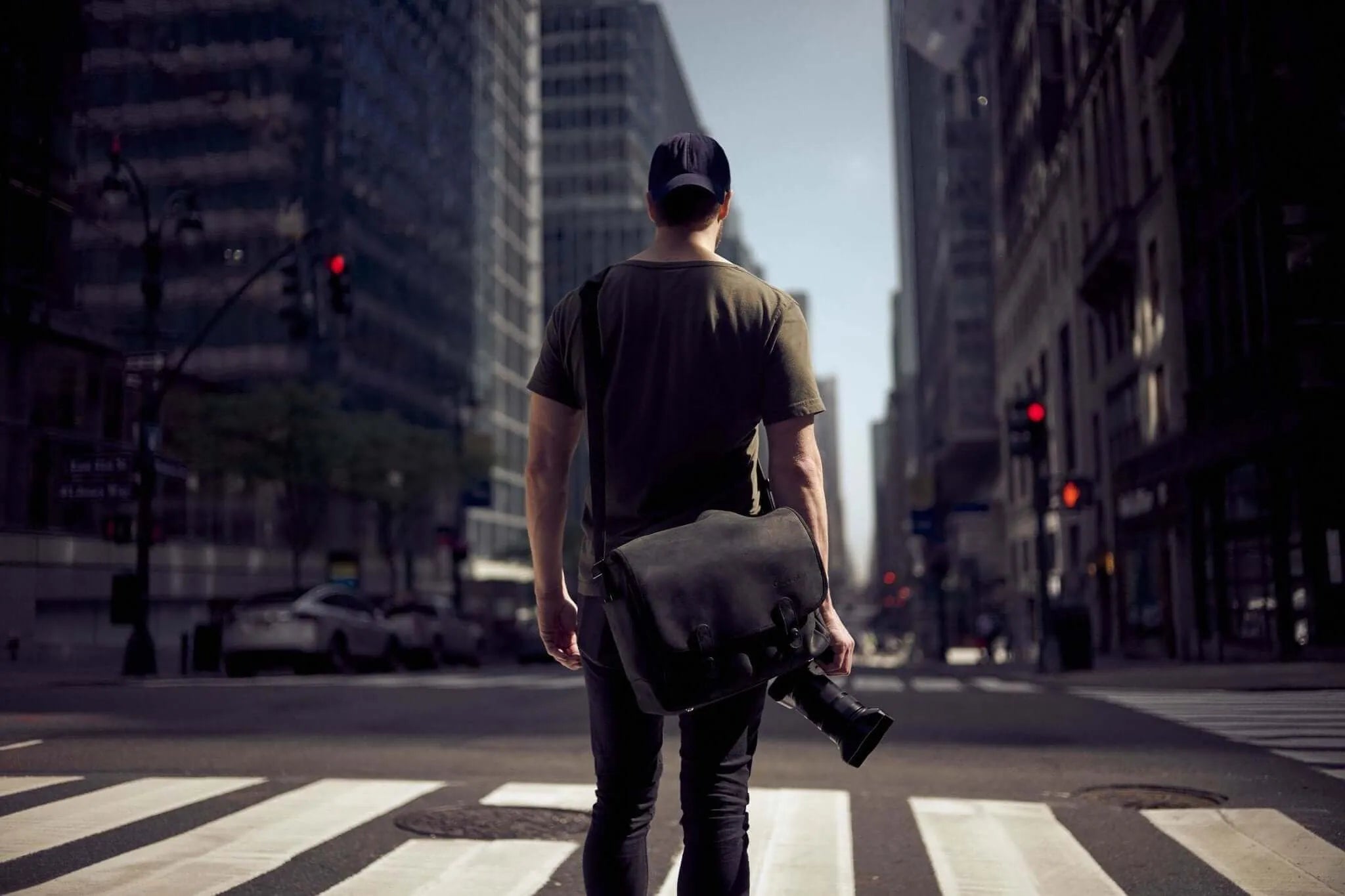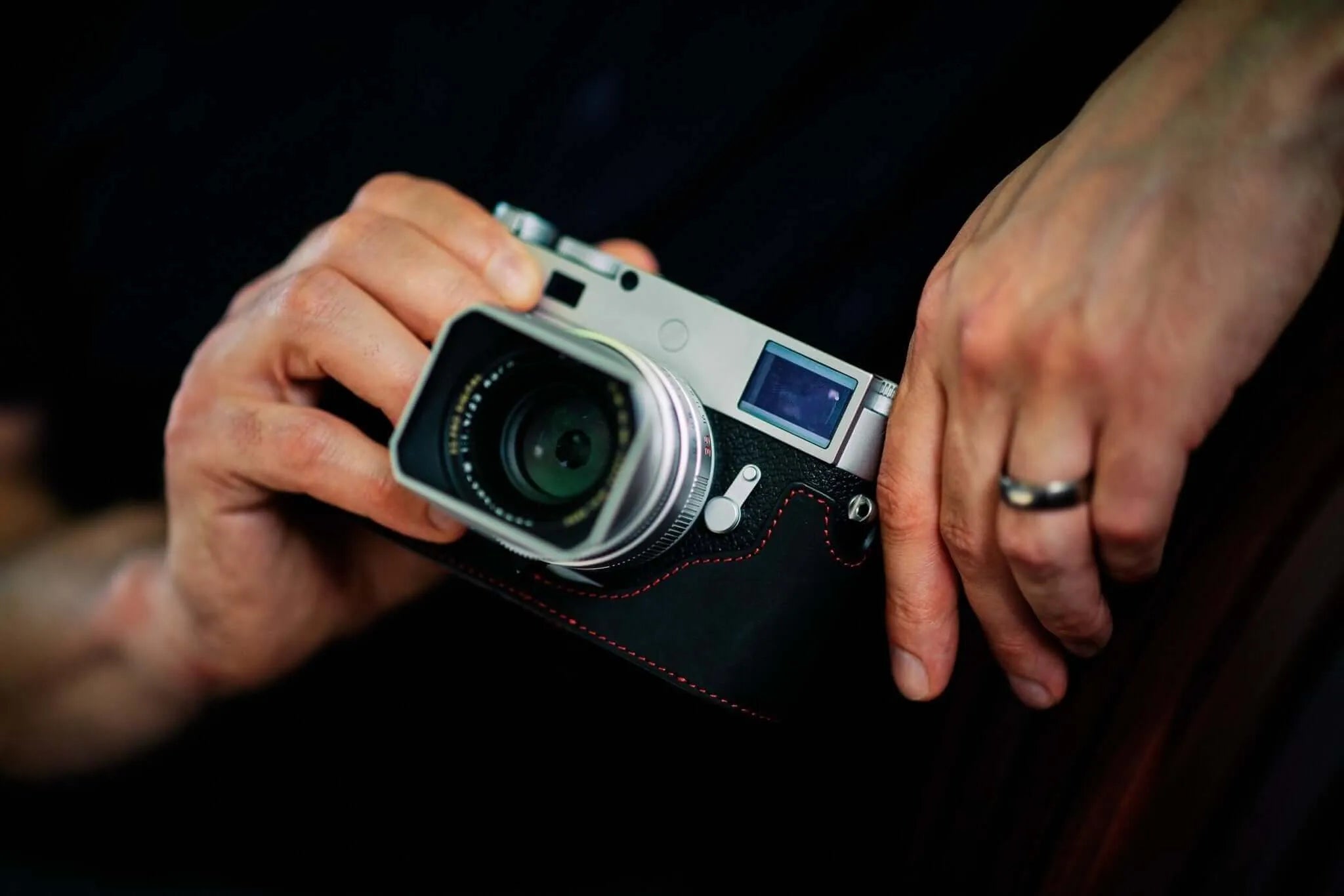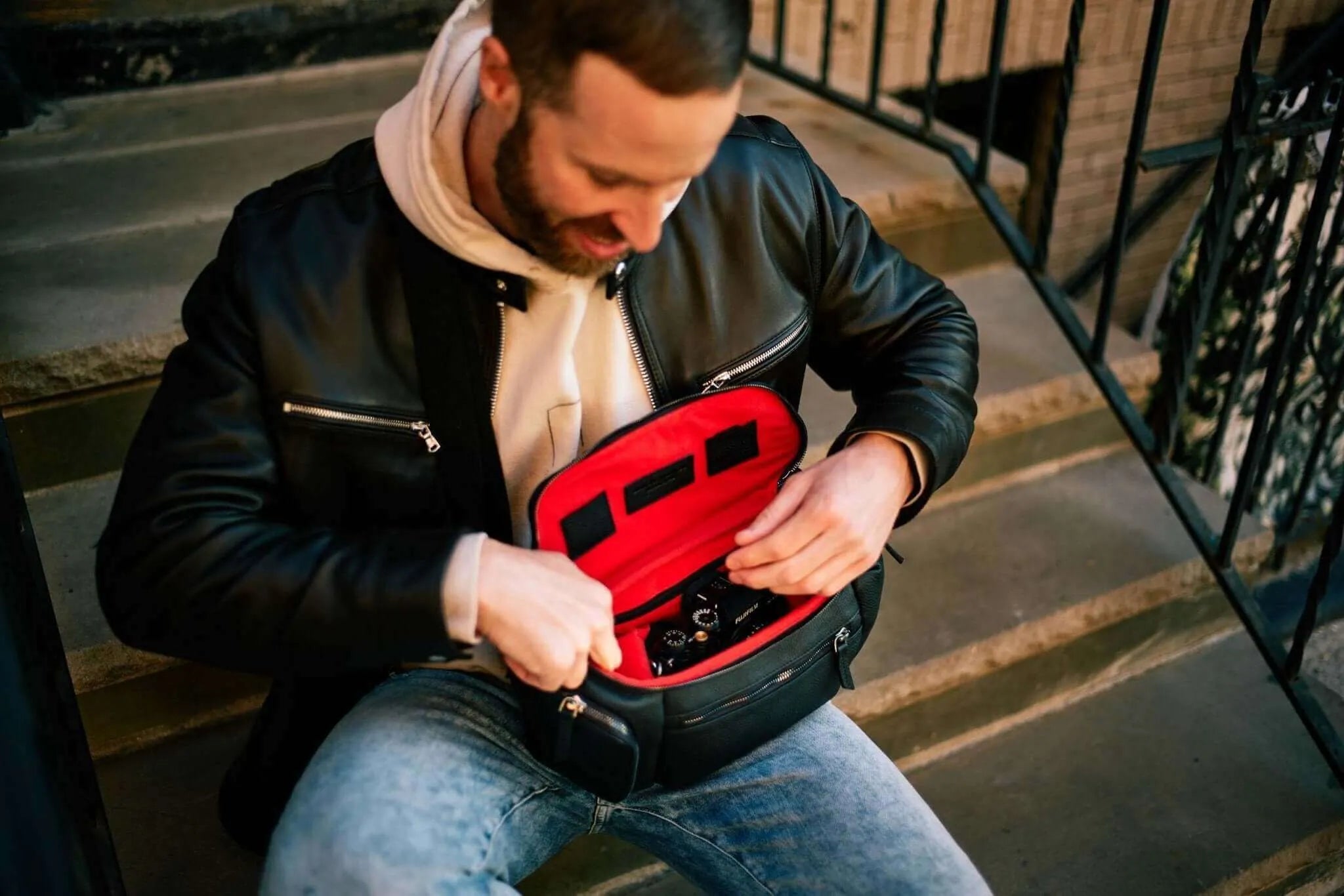
Street photography: which is the best lens?
Which lens is best for street photography?
Unlike many other forms of photography, street photography is characterized by the urban context and the subject of the everyday. Renowned U.S. photographer and author Susan Sontag describes the photographer in the context of street photography as "an armed version of the solitary wanderer who explores, pursues, and thwarts the urban inferno, the voyeuristic stroller who discovers the city as a landscape of lush extremes." What makes this genre special is the speed of the photographs, which as snapshots represent a snapshot of something irretrievably past that cannot be repeated. Street photography strives to capture a feeling and even make the smells and sounds of the street visible.
In accordance with these high demands, the street photographer naturally needs very special tools. Besides a good camera and a comfortable photo bag one or two lenses always accompany him on his forays. This article aims to provide an overview of the various considerations involved in choosing the right lens for street photography.
What are the personal requirements?
When it comes to choosing your own street photography lens, it obviously comes down a lot to personal preference and experience level. Many street photographers report that in the course of their work, they repeatedly change the lenswith which they mainly work changes over the course of their work. Also the way of shooting and the photos themselves change with every lens and so it is always instructive and exciting even for experienced photographers to experiment with a new lens.
You can also find the right camera bag for your equipment and everything you need to protect your camera in our Oberwerth Shop.. From classic camera bags modern sling bags up to noble photo-beachers and backpacks and backpacks. Of course you will also find hand straps and shoulder straps. Finest craftsmanship from the best materials. Feel free to look around and find the bags & accessories that best suit you and your equipment!
Since you sometimes spend many hours roaming the city for a good photo and don't necessarily want to carry a large, heavy lens, weight and handiness are of course of utmost importance. Many photographers like to carry two lenses, for example a telephoto lens to shoot discreetly from further away and one for closer shots. Of course, it also depends on the context; when traveling to foreign cultures, for example, if you don't want to distort or change the situation with your own appearance as a photographer, a telephoto lens can be a good solution. In any case, what is important in a lens for street photography is that it is lightweight yet high resolution. General considerations also include the focal length, shutter speed and aperture, and light sensitivity of the lens.
The right focal length
When we talk about the focal length of a lens, we mean the section of the image that is captured with a particular lens. The focal length is measured in millimeters, and a short focal length, such as 16 mm, is suitable for a large section of the image, such as a square full of people. A small focal length, such as 300 mm, on the other hand, allows you to capture a detailed shot of a passerby on the other side of the square, for example. In general, focal lengths are specific to each lens, with zoom lenses covering a wider range of focal lengths than fixed focal length lenses. So while zoom lenses are versatile, fixed focal length lenses are characterized by luminosity and often better image quality especially in low light conditions and are generally lighter and smaller, which makes them popular especially in street photography. If you don't want to commit or don't feel confident with fixed focal lengths yet, you can have both types of lenses with you as a compromise and thus decide between fixed focal length or zoom lens depending on the situation. But which fixed focal length do I need for street photography?
In general, street photography uses focal lengths between 20 and 50 millimeters, although most street photographers work with 28mm or 35mm focal lengths, as these lenses fit on small compact cameras. Their handiness and unobtrusiveness are highlighted as particular advantages of these lenses. While a lens with a 28mm focal length, which is considered the standard in street photography, can still be used for wide-angle photography with little distortion, with a 35mm focal length you have to get a little closer to the object of your photographic desire. Nevertheless, it is this focal length that is recommended for beginners, as it distorts the background only slightly, but at the same time captures a fairly large section of the image and thus a scene in its context. A focal length of 55mm also has its advocates, photographers appreciate it because it depicts people and background exactly as we perceive them with the human eye and therefore photos taken with this focal length have an impressive effect on the viewer and make him feel part of the scene.
Luminous intensity or aperture
The speed is the maximum aperture of the lens. Generally, the wider the aperture of a lens can be opened, the more light will reach the camera's sensor. In low-light conditions, a large aperture, i.e. a fast lens, may be necessary. The maximum aperture is indicated by the f-number specific to each lens. This starts with an f/ followed by a number where the faster the lens, the smaller the f-number. Fast lenses are often priced higher, but are worthwhile if you want to take pictures in the city in the early morning or late evening hours. In addition to the exposure, the aperture also affects the sharpness of the images. For example, for the special effect of images with a blurred background, you need a large aperture or high speed.
Shutter speed in street photography
While the aperture of the lens controls the number of light rays that fall on the light sensor (which corresponds to the former film in analog cameras), the shutter speed controls the duration of the exposure. For example, the shutter speed can affect how bright or dark the image becomes. A slow shutter speed also blurs moving figures or objects, which can be a desirable effect or a hindrance, depending on the image. While certain objects or situations, such as photographing low-light, distant star images, require long exposure times, street photography usually calls for fast shutter speeds that can capture fleeting moments in sharp focus. The shutter speed generally depends on the lighting conditions, but also on the selected focal length.
Lens connections
In addition to all these points, which are more related to one's own technique and personal preferences, the connection of the lens also plays a role, of course. This is because a lens mount is also specific to each chamber manufacturer. This means, for example, that only a Nikon lens or a lens made by a third-party manufacturer for this mount will fit on a Nikon camera. Therefore, when choosing a suitable lens, you should also consider the camera you may already have.
Last but not least, the price is of course also important when choosing the best lens for street photography. Photographers always emphasize that constant practice and experimentation can often be more important than perfect equipment. Every camera and every lens offer their own advantages and disadvantages in street photography. To take good photos, photographers should first and foremost know their tools well, but also be able to seize the right moment!
We at Oberwerth have the perfect bag for every street photographer, no matter if sporty, chic or discreet. Feel free to browse through our store and explore the diverse world of Oberwerth camera bags and accessories.
Sign up now for our newsletter and receive regular updates on our blogs, products and offers! You will also receive a 10% voucher for the Oberwerth Online Shop after successful registration!
Images: Phil Penman
Sources
https://www.22places.de/objektiv-beratung/
http://votographie.ch/objektiv-street-fotography/
https://www.trustedshops.de/blog/was-sind-verschlusszeit-brennweite-blende-und-iso/





